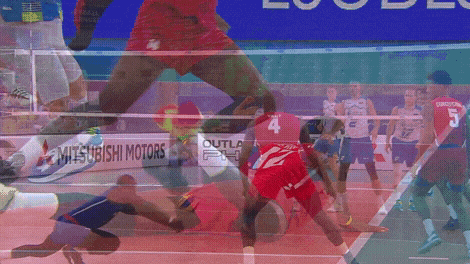Volleyball Rules for Libero Players

Volleyball Rules for Libero Players: Specific Rules and Regulations
In the sport of volleyball, the libero is a specialized defensive player introduced to enhance the quality of passing and defense. Recognizable by their contrasting jersey, the libero has unique rules that set them apart from other players on the court. Understanding these rules is crucial for players, coaches and fans to appreciate the libero’s role and strategic importance.
The Libero’s Role and Purpose
The libero position was introduced by the Fédération Internationale de Volleyball (FIVB) in 1998 to improve defensive play and extend rallies. The libero is a defensive specialist who excels in receiving serves, digging attacks and setting up offensive plays from the back row.
Designation and Jersey Requirements
- Each team is allowed to designate one or two liberos per match.
- The libero must wear a contrasting jersey color from the rest of the team to ensure easy identification.
- The libero cannot be the team captain, unless an exception is granted due to unique circumstances.
Rotational and Substitution Rules
- The libero cannot serve, block, or attempt to block.
- The libero is restricted to playing in the back row and cannot complete an attack hit if the ball is above the net’s height at the moment of contact.
- Unlike regular substitutions, the libero can replace any back row player at any time without notifying the referee. However, a libero replacement does not count as an official substitution.
- The replaced player must rotate back in for the libero when their turn in the rotation reaches the front row.
Setting Restrictions
The libero is allowed to set the ball, but with a key restriction:
- If the libero is in front of the attack line and sets the ball using their hands (overhand finger pass), any attack hit by a teammate must be below the height of the net at the moment of contact.
- If the libero sets the ball from behind the attack line, teammates can attack without restriction.
Serving Rules (Variations by League)
- Under FIVB and most international rules, the libero is not permitted to serve.
- However, in some competitions, such as NCAA women’s volleyball, the libero may serve in one specific rotation for one player per set.
Injury and Replacement Rules
- If a libero is injured and cannot continue playing, the coach can nominate another libero, provided they were registered as a potential libero before the match.
- If no second libero was designated, the team must continue without a libero.
- If a libero is expelled or disqualified, the team must proceed without a libero for the remainder of the match.
Special Situations
- If the libero makes an illegal play, such as attempting a block or completing an illegal attack hit, the opposing team is awarded a point and the serve.
- If the libero fails to wear the contrasting jersey or violates the designated substitution procedures, referees may penalize the team.
Conclusion
The libero is a crucial part of modern volleyball, improving defensive play and keeping rallies alive. While their role is highly specialized, understanding the rules governing their play is essential for teams looking to maximize their defensive strength. Adhering to libero regulations ensures fair play and maintains the integrity of the game.


